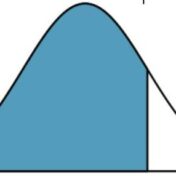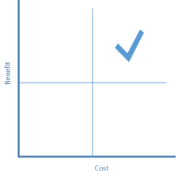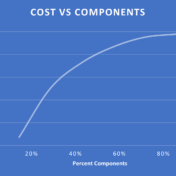Creating exact performance specifications for a new network design is a challenging task. There can be many unknowns that force the designer to make assumptions and guesses. The level of uncertainty also grows as the number of design variables increases. Engineers use factors of safety to compensate for any errors… Read more »
A common approach in solving complex engineering problems is to break them into smaller problems and solve each one separately. Unlike some complex systems, such as an airplane, which consists of almost independent subsystems (fuselage, wings, engine, navigation, etc.) that can be designed independently, network components are interconnected and cannot… Read more »
Network design is an exercise in decision making. The design process takes client requirements and constraints as input and produces a set of maps, plans, quantities, and policies. The process is influenced also by sets of business and environment contexts. A common approach to designing networks is to follow a… Read more »
Significant engineering designs are rarely the result of one person’s effort. Network design performed by a single person may be acceptable if user requirements are simple and the possibility of getting things wrong is low or easily fixable. Otherwise, the design effort should involve a group of experts and relevant… Read more »
A design can be evaluated using the cost-benefit principle, and it will be considered good if the benefits outweigh the cost. From a designer perspective, a cost-benefit analysis can assess the financial returns associated with adding a design feature. The designer should also evaluate benefits and costs from the user’s… Read more »
The consistency principle states that systems are more usable and learnable when similar parts are expressed in similar ways [Lidwell 2010]. Consistency in network design can be applied to appearance (e.g. network documentation) or to functionality (e.g. device configuration). Internal consistency refers to consistency with other components in the system… Read more »
The 80/20 is also known as the Pareto Principle. It refers to the work of Vilferdo Pareto that describes the relationship between the elements that make up a whole and the influence that each element exert on the whole. The 80/20 rule is observed in all large systems, including data… Read more »
Design principles are widely applicable laws, guidelines, biases and considerations that designers use to guide their decision-making process. Engineers use some of these principles to design products that meet the users’ requirements. In a series of posts, I describe briefly one design principle that is applicable to the design of… Read more »
This is my latest Android App and the first to be published in Google Play. The App provides you with basic information about any unicast IPv4 address you enter, including: the network id portion of the IP address given the mask length, the number of usable host IP addresses within the… Read more »







